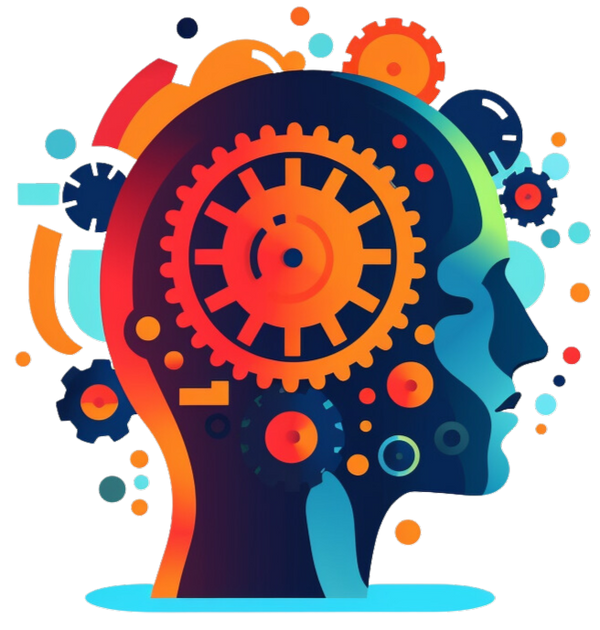
Treating ADHD: An overview in 5 chapters
Share
Neurobiological causes of ADHD
ADHD, attention deficit hyperactivity disorder, is a complex neurological disorder that occurs in both children and adults. It is characterized by several core symptoms, including inattention, impulsivity, and hyperactivity, which can cause problems in various contexts such as school, work, or personal relationships. There are various causes and factors that can contribute to the development of ADHD.
First, there is a A strong genetic component to ADHD . Numerous studies have shown that ADHD affects diverse members in families, suggesting that there is some hereditary predisposition to this neurodivergence. Many different genes are likely involved, each with only a small influence, but together they contribute to an increased risk of developing ADHD.
 Secondly, there is evidence of Neurobiological differences in people with ADHD . Imaging studies have shown that certain areas of the brain responsible for controlling attention and impulses may be structured differently in people with ADHD. Furthermore, there are differences in the way neurotransmitters, the brain's chemical messengers, function in those affected. The neurotransmitters noradrenaline and dopamine, in particular, play a central role in ADHD: noradrenaline and dopamine are not available in sufficient quantities where they are needed.
Secondly, there is evidence of Neurobiological differences in people with ADHD . Imaging studies have shown that certain areas of the brain responsible for controlling attention and impulses may be structured differently in people with ADHD. Furthermore, there are differences in the way neurotransmitters, the brain's chemical messengers, function in those affected. The neurotransmitters noradrenaline and dopamine, in particular, play a central role in ADHD: noradrenaline and dopamine are not available in sufficient quantities where they are needed.
Further findings from brain research:
- In people with ADHD, less blood sugar is consumed in the frontal parts of the brain, resulting in less blood flow to the brain.
- The right, frontal brain region is less active (prefrontal neocortex, including planning/working memory)
- An increased amount of the “dopamine transporter” and a genetic alteration in the “dopamine transporter gene” were detected
Finally, there is also Environmental factors that increase the risk of ADHD include complications during pregnancy or childbirth, exposure to environmental toxins, such as tobacco or alcohol use during pregnancy, and psychosocial factors such as a stressful family situation or significant childhood stress.

When is the use of ADHD medication appropriate?
The decision for the Use of ADHD medication is an individual decision based on a thorough medical and psychological evaluation. Medication is typically considered when ADHD symptoms are so severe that they significantly impair the individual's ability to function in daily life.
It is important to understand that medication is not a "cure" for ADHD. However, it can help control the symptoms of ADHD and make it easier for the individual to cope with the challenges that the disorder presents. In particular, medication can help improve attention, reduce impulsivity, and to increase general well-being .
In addition to drug treatment, there are also Other important therapeutic approaches that can help manage the symptoms of ADHD include behavioral therapy, Parent training and other forms of psychotherapy aimed at developing and strengthening practical skills that are necessary or useful for successfully coping with everyday life.

How do stimulants work?
Stimulants are a class of medications often prescribed to treat ADHD. most common stimulants include methylphenidate and lisdexamfetamine, which are available under various brand names such as Ritalin , Concerta , Elvanse and Medikinet retard are available.
These medications They work by increasing the concentration of the neurotransmitters dopamine and norepinephrine in the brain . These neurotransmitters play a central role in regulating attention, activity, and impulse control. By increasing their availability, stimulants can help reduce the core symptoms of ADHD.
The duration of action of different stimulants varies. Immediate-release methylphenidate (Ritalin), for example, lasts approximately 3-4 hours. Extended-release forms of methylphenidate, such as Medikinet retard, last 6-8 hours, while lisdexamfetamine (Elvanse) and Concerta (also Ritalin-based) last up to 12 hours or more.

Age-related changes in symptoms
ADHD symptoms vary across the lifespan and respond to a range of influences, both internal and external. In children and adolescents suffering from ADHD , hyperactivity is often the most noticeable symptom. They have difficulty sitting still, tend to be constantly on the move, and can exhibit impulsive, often disruptive behavior. They often can't wait their turn and interfere with others' activities. The symptoms can be so intense that they significantly impair learning at school and social interactions.
Over time, however, ADHD symptoms change, primarily due to pressure to adapt. In adolescents, the apparent physical restlessness usually begins to subside. They appear less fidgety, but the inner restlessness may persist. They may even be perceived as sluggish or lazy, as the previous hyperactivity has been replaced by a paralyzing inner feeling of restlessness and tension. Essentially, the hyperactivity shifts to the mental, which can lead to tormenting thought loops, constant second-guessing, and great inner and social insecurity.

In the Adulthood is ADHD This means that ADHD is often characterized less by physical hyperactivity than by inner restlessness, problems with attention control, and high impulsivity. Those affected often continue to have difficulty concentrating on a task, keeping track of everyday tasks, and following through with projects. This can also have a significant impact on their professional performance and personal relationships. Adults with ADHD are often perceived by those around them as self-centered, antisocial, emotionally distant, or disinterested—although a large portion of their available attention is simply absorbed by their mental and physical discomfort.
Emotional dysregulation, which can manifest as rapid mood swings, impulsive reactions, outbursts of anger, and difficulty coping with stress, is also a common problem in adults with ADHD. This may also be accompanied by Difficulties in social interactions and (friendly) relationships , as impulsivity and inattention make it difficult to listen and consider the needs of others.
The individual strengths A person's strengths and weaknesses, the environment in which they live and work, and other mental illnesses or stressors can also affect how ADHD symptoms develop over time. An unsuitable career choice will usually exacerbate internal struggles, and a hectic environment will exacerbate ADHD symptoms. In principle, every additional external stressor increases a constantly present "everyday stress level" that neurotypical people otherwise experience almost exclusively in exceptional situations (or "bad days").

Indication for the treatment of ADHD
The complexity and variability of ADHD requires a A differentiated, individualized treatment approach . The first step in this process is always a thorough and comprehensive diagnosis. This not only considers the presenting symptoms and their impact on everyday life, but also includes a thorough medical history and the exclusion of other potential causes. The involvement of specialists such as psychologists, psychiatrists, and pediatricians is crucial.
An individualized treatment plan is based on the results of this comprehensive assessment and takes into account the patient's age, severity of symptoms, individual needs, and life circumstances. In many cases, the plan includes both drug and non-drug treatment approaches.
Medications such as methylphenidate (e.g., Ritalin, Concerta) and lisdexamfetamine (Elvanse) can help improve concentration and attention, reduce impulsivity, and control hyperactivity. They have been proven effective and, when used correctly, can significantly improve the quality of life of those affected. However, it is important to emphasize that medication is not the sole solution. It is a tool that allows those affected to benefit from other treatment approaches.
Psychotherapy, including cognitive behavioral therapy and social skills training, can also help those affected to better manage their symptoms and develop successful coping strategies. Parent training programs can help families better understand what ADHD is and teach skills to effectively deal with the challenges.

In addition, other interventions, such as Nutritional advice , sport and exercise, stress management techniques and support at work or school play an important role in improving the daily life and quality of life of people with ADHD.
ADHD treatment is a dynamic and constantly changing process. It requires regular reviews and adjustments to meet the changing needs and challenges of those affected. The ultimate goal of any therapy should be to support those affected to utilize their abilities and talents, minimize their difficulties, and lead a fulfilling, productive life. Because the daily routine of many people with ADHD effectively looks like this: that they "try 200% to get 50% out of it." What makes this even more difficult is that their limitations are invisible to those around them.
